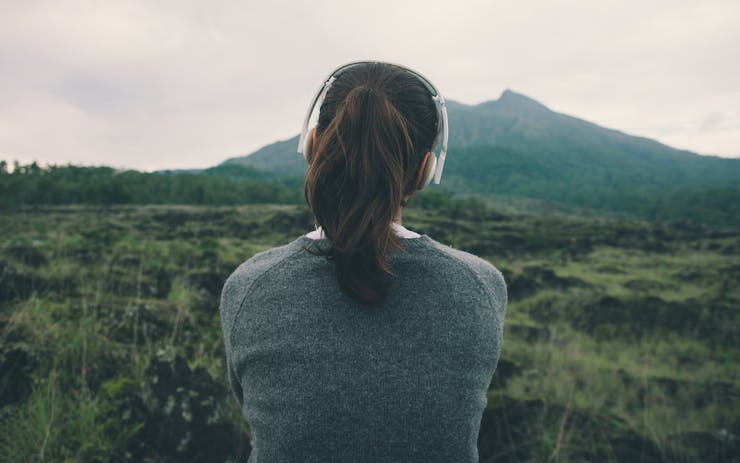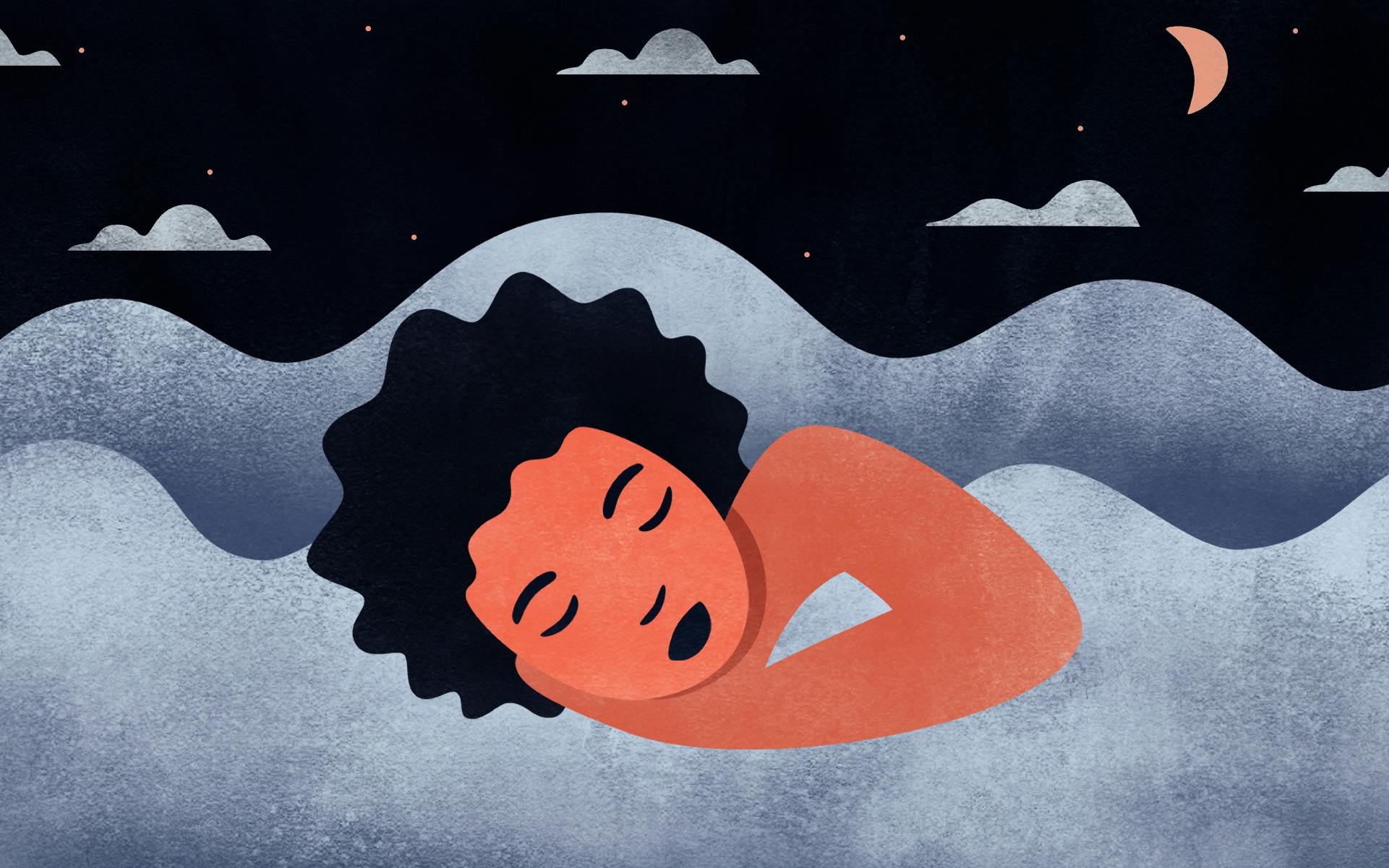I stumbled upon binaural beats a few months back as I was lying awake one midnight trying to force sleep. After tossing and turning for what felt like an eternity, I fired up my laptop in defeat and typed a quick Google search: “fast ways to fall asleep.” I was then directed to a curious phenomenon called binaural beats – the method of combining two different tones on separate wavelengths (usually with noise-cancelling headphones at hand) in order to create an auditory hallucination.
Apparently, when set to proper frequencies, these tones may induce relaxation, creativity, lucid dreaming, and a number of other behaviors from a simple combination of sounds. Some – well, most – consider binaural beats to be a basic placebo effect when held to their lucid dreaming capabilities, and the phenomenon is hardly taken seriously in the medical field for its supposed anti-anxiety properties.
Evidence in favor of binaural beats and their reaction in the brain is murky at best, but with thousands of uploaded videos across YouTube (and millions of views and listens), they seem to be a popular choice for those needing to escape reality with vivid dreams, or maintain better focus during work or school.
The possibility of inducing lucid dreams piqued my curiosity most while reading personal accounts of binaural beats effects – so much so that I ended up popping on my own noise-cancelling headphones to give binaural beats a try. The result? I now frequently listen to binaural beats for at least an hour before bed every other night.
Admittedly, they work for me – I don’t lucid dream per se, but I definitely experience extremely vivid dreams, which I had never had before. Many of these dreams I remember well the next day, and even into the following week. Sometimes fantastical things occur; other times, I just sit and have conversations with people I haven’t seen in a very long time.
Interestingly, I was never a dreamer prior to listening to binaural beats (or, if I was, I never remembered), so if this is all a coincidence, it’s a pretty unique and fun one. Sometimes I’m excited to fall asleep just to see what my dreams will be.
Where Did Binaural Beats Come From?
In 1973, biophysicist Dr. Gerald Oster published “Auditory Beats in the Brain,” where he studied the physical effects of binaural beats. Oster was highly interested in experimental and fringe theories, so binaural beats were right up his alley. His study was inspired by Heinrich W. Dove, a Prussian physicist and meteorologist who was similarly interested in experimental science and first discovered binaural beats in 1839. Dove found that the human capability to hear binaural beats was a form of evolutionary adaptation.
As explained by Oster, “What is the neurological basis of binaural beats? The simplest explanation is that the number of nerve impulses from each ear and the route they travel to the brain are determined by the frequency of the incident sound, and that the two nerve signals interact somewhere in the brain.” These ‘interactions’ seem to be what causes vivid dreaming or creativity – in short, the confusion of the ear firing connections in the brain.
It’s important to note that Oster did not study the dream or relaxation states of his patients while they listened to binaural beats; only auditory frequencies and how they were heard by his subjects. The conclusions of binaural beats’ effects on behavioral issues have mostly come from the educated guesses of observers who are not scientists, but who regularly engage in binaural beats sessions.
During his study, Oster also found that certain people could not pick up binaural beats tones the same way others could. He states, “It may be significant that some of those who could not hear the beats suffered from Parkinson’s disease,” though there is no follow up as to why that might occur for Parkinson’s patients. Oster also observed differences in how the sexes hear binaural beats:
“It appears that some women do show marked variations in the perception of binaural beats during the menstrual cycle. When the beats are not heard, the women often hear two separate tones. Men, on the other hand, show no variation during the month. These results suggest that the binaural-beat spectrum may be influenced by the level of estrogen in the blood.”
Years later, in 2007, the National College of Natural Medicine published a study on binaural beats and how they relate to the mentality of human subjects. It concluded, “Binaural beat technology may exhibit positive effect on self-reported psychologic measures, especially anxiety.”
The conclusion warrants skepticism and stronger belief in a placebo effect being at play, especially when psychological elements were “self-reported” before the study. However, the college’s study was steeped in behavioral outcomes which is what listeners mostly cling to; Oster’s study, by contrast, focused on physical outcomes.
Shop highly rated dispensaries near you
Showing you dispensaries nearThere are other studies that have been performed involving behavior and binaural beats, but they all come to similar conclusions and hardly any seem to move from a ‘pilot stage’ – either the funding runs out or interest is low.
Later, the National College of Natural Medicine ran another study on binaural beats effects, and found that “There was an increase of the Profile of Mood States depression subscale in the experimental condition relative to the control condition. There was also a significant decrease in immediate verbal memory recall in the experimental condition compared to control condition.”
Yet these negative conclusions are a far cry from personal accounts linked to binaural beats. On any dedicated binaural beats YouTube channel, for instance, one can easily find hundreds of reports of positive and active lucid dreaming or relaxation from its users.
Pairing Cannabis with Relaxing Beats
I wrote this article because I have experienced the vivid dreaming that comes with listening to binaural beats, and I have read accounts of people pairing binaural beats with cannabis to either better focus on meditation or to bring about stronger and longer dreams. I wanted to give that pairing a shot and see for myself what type of effect cannabis would have on my own binaural beats sessions. I also wanted to encourage others to give it a try, especially those who already listen to binaural beats and have been curious about complementing the beats with cannabis as I was.
Since I had a bit of extra indica-heavy Lavender lying around, I took a few hits, switched on one of my favorite binaural beats sleeping tracks (below), and proceeded to melt into my bed.
Lo and behold, the experiment didn’t go as I had hoped – I couldn’t fully shut off my mind as I usually can when I listen to binaural beats without the influence of cannabis. I was thinking about everything, yet nothing in particular. My brain seemed to be more awake than usual, and I actually had a bit more trouble falling asleep.
Riding on the powerful placebo effect that I have presumably been experiencing from day one with binaural beats, I wanted it to really shine during my cannabis pairing; instead, it seemed to fall flat. My dreams were, dishearteningly, unmemorable, although I do know I had at least one. Of course, it’s important to factor marijuana’s tendency to inhibit dreams into any expectations.
Even if binaural beat-induced dreams weren’t everything I hoped they would be, something else did intrigue me while listening: I felt I was hearing the beats in a unique rhythm that I hadn’t heard while listening with a sober mind. It was as though I was more in tune and picking up on sounds I had otherwise shut out. With that in mind, I could definitely see binaural beats being a useful tool to incorporate into certain types of meditation, even if they’re mostly seen as a flamboyant sibling to regular old white noise. I’m also also curious to see if the more creative and focused binaural tracks would pair well with an energetic, sativa-dominant strain.
If you’re interested in trying binaural beats paired with different strains of cannabis, I certainly recommend doing so to see what happens. Experiences will likely vary for each individual, and you may well end up getting a better night’s sleep than ever, or experiencing an unexpected bump in creative flow.
Have you tried pairing binaural beats with cannabis? Share your experiences in the comments!






